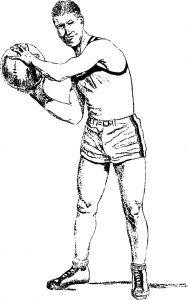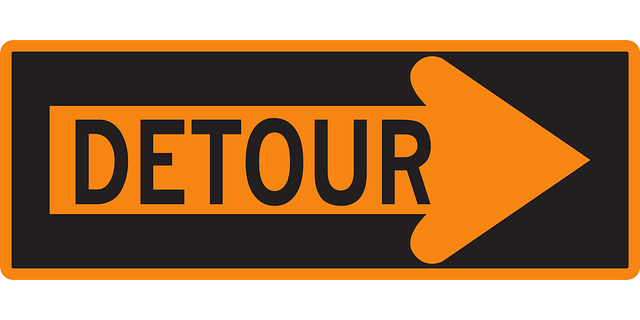“Nevermind” Roseanne Roseannadanna
When I first started out applying for jobs as a teen and then as a young adult, I was always hired. I was smart, enthusiastic and available to work evenings, weekends and holidays. Sign ‘er up. As I climbed up my career ladder, the competition got stiffer. The first time I didn’t get a job I tried for, I was completely unnerved. What?! They picked someone else? Now What?
At the time, I remember thinking that the selectors made a huge mistake. My path in the organization seemed so clear to me. How was that not a shared vision? If I had more self-awareness at the time, I would have sought out someone I respected on the hiring panel to learn about why not me. Instead, I self-coached to a “now what” choice of going back to school to earn another advanced degree. While this move provided neither a golden ticket nor an insurance policy for other jobs in the future, eventually it did lead me farther along down the path to a destination I hadn’t previously envisioned.
What?! There’s a Party?
Now that I’m a more seasoned professional, one of the insights I’ve gained along the way is that the higher up in an org chart I aim, the more intense the competition not only for positions on that chart but also for implementation of ideas. Hiring pools can be deep and organizational resources can be limited. In my home we’ve implemented a “policy rule” that if we get an unexpected “no,” we are allowed to have a personal 24-hour pity party. That is to say that if we didn’t get the job, the account, the ok, we can feel sorry for ourselves for an entire 24-hour period.
During this oh-so-pitiful party, the other people in the household are required to allow us to complain about the unfairness of life, the shortsightedness of the decision-maker, that we totally suck, even that the world is against us. They have the option of agreeing with us or staying quiet, but they are not allowed to make us look for the good in the situation yet. I’ve seen people beat themselves up for feeling bad about a career disappointment or had well-meaning friends and family force “the bright side” too quickly. However, once that 24 hours is up, we are expected to acknowledge that our path has taken an unexpected turn. It’s time for us to survey the landscape, set new expectations, and take the next step forward.
I like to coach people to use the 24-hour rule to help them learn to give themselves a break. Our microwave world sometimes wants us to be better before we’re ready. Some disappointments might require a slightly longer pity party, but I find that when I’m mentally, emotionally and physically healthy, my mind naturally wants to transition to what’s next rather than stay stuck in the unattainable.
The Only Way Through it is Through it
There are many models out there from which to learn about how humans adapt to change and loss. See Bridges or Kubler Ross and the many articles that debunk their models as well. The idea that there are shared experiences when we mourn a disappointment, which is often experienced as a loss, isn’t so much a road map that is carefully followed from point A to point B as validation of common emotions in uncommon situations. It helps me to know that as humans sometimes we need to move through denial and resistance before we can get to exploration and commitment. These stages resonate with me not only for organizational change management but for changes in my professional life too. I usually have enough self-awareness now to know that my initial What?! Now What? response is that reeling disorientation of denial which comes from shock. When I have visualized a destination with complete clarity and then come upon an unexpected detour I have to first allow myself to move through, for me, the inevitable denial. Feel it. Once it computes with me as denial, I might not be ready to accept fully what is but at least I’m not fooling myself. I got a “no.”
Moving through denial can lead to the next fun stage of resisting the reality of the situation. This stage can feel temporarily empowering – I will resist what is! It’s ultimately fruitless – but resist I will. Once I allow myself to move through resistance and get to exploration, I start to let go of the destination I had in my sights which makes space in my brain for new paths to reveal themselves.
Patterns and Pivots
I thinks it’s helpful information for newly minted professionals to know that there isn’t a paint-by-numbers approach for making the leap to management or having an idea implemented. Thinking that there are specific steps that guarantee a “yes” typically leads to regret at least and disillusionment at worst. For me, one of the most helpful ways to understand why someone else got a “yes” when I got a “no” is to seek out honest feedback, listen, and learn. A good coaching question I’ve heard to ask someone who is in a What?! Now What? situation is “what are you going to take away from this disappointment?” This question acknowledges the element of loss and then moves the conversation forward – away from victimhood – and towards taking responsibility for self-reflection and action.

Full disclosure: this isn’t me
I played basketball on my high school team and often had the highest number of “assists” in a game. An “assist” is the pass to the person who takes the shot. The key to the assist is not only seeing the whole floor, but also having a solid pivot – one foot planted firmly while turning, turning, turning, looking for either the best shot at the basket or the best pass to an open player. I had to be quick and aggressive or I’d get trapped by an opposing player. When a What?! Now What? situation comes up, if I think of it as an opportunity to walk down a different path or pivot to look for the open shot, I’m more likely to discover new opportunities that I couldn’t have imagined were waiting for me. This can be the most exciting part of moving through a disappointment – finding new routes – detours, sometimes to the same destination, sometimes to destinations previously unimagined.
Recommended Reading
Pivot: The Only Move that Matters is Your Next One/Jenny Blake (2016)
This book is has many helpful examples of pivots that people have taken on their path to whatever success looks like for them professionally and personally. It is packed with exercises and questions. Usually I just read through a text like this, gleaning what’s new in the research or application of research on human behavior. There is not new research ground tread here, but there are some new ideas to explore. I decided to make the effort and do a few of the exercises in each chapter. They helped me make some good discoveries about myself. I highly recommend it.

August 2, 2017 at 8:12 pm
Hi Donna,
Thank you Donna once again for this intriguing premise and I can see the value of cultivating it as a skill set. I waited until I read the book you recommended before posting a response as I was quite intrigued by how one’s latent talents or interests could be explored when a dream opportunity does not work out. Jotting down take-aways from readings is something I enjoy as I learn and retain through writing. I wanted to share my take-aways from reading the book you recommended –
Pivoting within roles and throughout our careers is the new normal
Pivoting is a mindset and a skill set and you can get better at both
Pivot is a change you make out of your own volition
You can’t connect to the dots looking forward, you can only connect to them looking backward – Steve Jobs
Reflect on your work history – Connect dots looking backward how you have already pivoted from one related area to the next
Learn to connect dots looking backward and then forward too
Examining your career moves with the lens of hindsight helps uncover patterns in what makes transitions successful and what impedes them
People who are most successful, explore continually and allow space to shift purposefully from one related area into the next
August 12, 2017 at 4:54 pm
As always, thanks for reading and responding, Padma. I’m glad you enjoyed Pivot. It was recommended to me by Mary Ellen Bates. I’m learning a lot from her too.